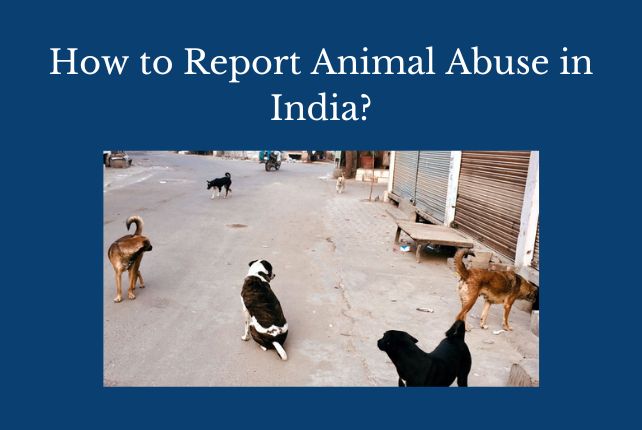Animal abuse remains a pressing issue in India, where countless animals suffer from neglect, cruelty, and exploitation. Understanding where to report animal abuse is essential for anyone who witnesses such acts or suspects that an animal is in peril. This guide serves to elucidate the various avenues available for reporting instances of animal cruelty in India.
First, it is crucial to define what constitutes animal abuse. The Prevention of Cruelty to Animals Act, 1960, serves as the cornerstone of animal welfare legislation in India. Under this act, any action that causes unnecessary pain or suffering to an animal is deemed abusive. This includes physical violence, neglect, hoarding, and even exploitation for entertainment or profit. Recognizing these forms of abuse is the first step toward taking action.
To initiate a report, one must gather genuine evidence of the abuse. This could include photographs, videos, or detailed written accounts of the incident. Eyewitness testimonies can also bolster the validity of the report and provide a clearer picture of the situation. Documenting the location and time of the incident is equally important, as this information will assist authorities in addressing the issue effectively.
There are various avenues for reporting animal abuse in India:
1. Local Police Stations
The first point of contact when witnessing animal abuse is usually the local police department. Under the Indian Penal Code, animal cruelty is an offence that can be investigated by law enforcement agencies. Providing the police with evidence and a detailed account of the incident can facilitate prompt action. Certain jurisdictions may have dedicated animal welfare officers, who are trained to handle such cases more sensitively.
2. Animal Welfare Organizations
Numerous NGOs and animal welfare organizations operate throughout India, committed to rescuing and rehabilitating abused animals. Reporting cases to these organizations is incredibly effective. Many have established hotlines, and trained professionals can guide you through the reporting process. Some prominent organizations include:
- PETA India – They offer comprehensive resources and a hotline for reporting cruelty.
- Blue Cross of India – This organization engages directly in animal rescue, and has numerous volunteers who can take immediate action.
- Humane Society International India – Their team is well-equipped to handle severe cases of animal abuse and cruelty.
3. Animal Control Departments
In certain urban areas, local municipal bodies have dedicated animal control departments. These departments are responsible for the welfare and control of stray animals. Reporting abuse to these departments ensures that they can take the required action, such as rescue and rehabilitation. It is advisable to check your local municipal website to find specific contact information and procedures for reporting animal cruelty.
4. Online Reporting Tools
With the increasing resonance of social media and digital communication, various online platforms exist that make reporting animal abuse easier. For instance, organizations like Facebook and Instagram have mechanisms in place for reporting cruelty, particularly in relation to content shared by users. Subsequently, the matter can be escalated to relevant authorities.
5. Legal Action
If initial reporting yields no results, pursuing legal avenues is an option. Under the Prevention of Cruelty to Animals Act, a complaint can be filed in a court of law against the perpetrator. Legal action typically requires the assistance of an advocate familiar with animal welfare laws. This approach may lead to fines and even imprisonment for the offenders.
6. Community Engagement
Engaging your community plays an instrumental role in addressing animal abuse. Raising awareness through local workshops, seminars, and discussions can empower more individuals to report incidences of cruelty. Collaboration with local schools, colleges, and community groups can create a comprehensive understanding of animal welfare issues, ensuring that everyone knows how to respond in cases of abuse.
7. National Animal Helpline
For immediate assistance, the National Animal Helpline, operating under the Ministry of Fisheries, Animal Husbandry and Dairying, can be invaluable. This helpline is designed to facilitate swift action and connect concerned citizens with organizations that focus on animal welfare. The helpline’s efficacy demonstrates governmental acknowledgment of animal rights and responsibilities.
Conclusion
India has made remarkable strides in animal rights legislation, but it requires the collective action of its citizens to mitigate animal abuse effectively. Knowing where to report animal abuse equips individuals with the power to make a difference. By utilizing local police, welfare organizations, and community resources, we can foster a culture that prioritizes the sanctity of animal life. Remember, reporting abuse is not just a moral obligation; it is the duty of every compassionate citizen. Whether through direct action or community engagement, everyone can contribute to halting cruelty and fostering a more humane society for all sentient beings.








